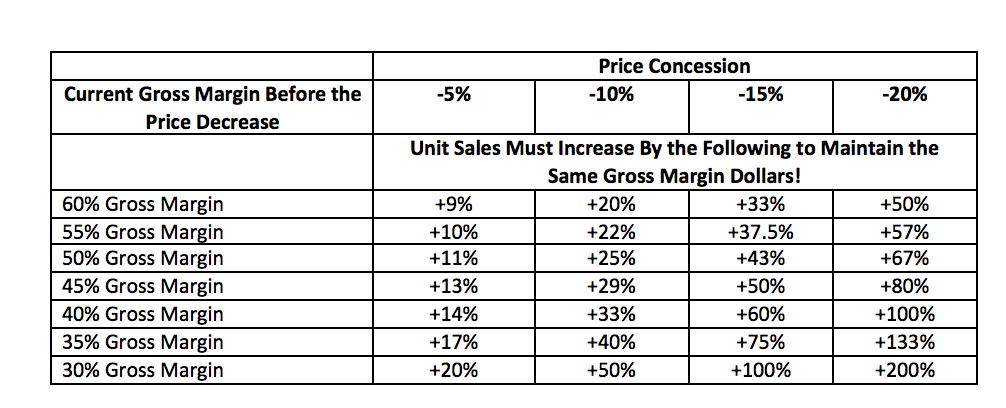Is your sales organization throwing money down the drain with each deal that they are selling to hospitals? Be honest with yourself. It happens every day. You think you have the deal won and then someone says, ” all we need now is to get the PO through Strategic Procurement.” You venture to Strategic Procurement and they hit you with a three-part message you didn’t want to hear.
- Money is very tight for all hospital purchases.
- Due to sequestration and the Affordable Care Act the hospital is receiving lower reimbursements and they must cut expenses.
- In-patient admissions are down or flat and costs must be cut.
The end result is to paint a bleak picture that the hospital barely has enough money to keep their doors open and you must discount your product to get their business. They then proceed to treat you like a commodity and take your proposed price and ask you to discount it 10% or more.
What Are Your Options?
- Tell them the price is firm and hope they were bluffing.
- Immediately drop your price 10% to give them what they want.
- Tell them you can manage a 5% discount but that’s the best you can do. This splits the difference but it still leaves money on the table.
- Tell them you need to check with your manager.
When competition is tough it’s tempting to resort to price concessions. When professional buyers tell you to give them a 10% discount or you won’t get the business, it’s tough not to discount your product or service.
What’s the Negative Impact of Price Concessions?
Most sales representatives don’t understand fully the effects of price discounts on gross margins or unit sales because they have never been taught to think financially.
Every time a sales representative discounts a product or service they or the organization must increase their unit volume to make up the difference. Unless you pay your sales organization on gross margin they have no idea what the monetary effects are of price discounting. Here is a table that illustrates the effects of price discounting on unit sales required to maintain the same gross margin.

This table shows that if everyone in the sales organization discounted their sales 10% at a 50% gross margin then unit sales would need to increase 25% to make the same revenue goal and profit margin.
This table also shows why written guidelines need to be in place for how much of a discount can be provided by sales representatives and managers before they must obtain approval from senior leadership. The table also demonstrates that for the organization to meet its profit goals, it must not only achieve its revenue number but it must do it at the stipulated gross margin.
When price concessions are essential for closing a deal, they do not need to be provided in 5% increments. Instead, try 1.5 % or 3% instead of 5%.
Parting Thoughts
Allowing your sales organization to blindly discount when you are selling to hospitals or any account is one of the worst oversights of senior leadership. It conditions your customer to de-value your product while throwing money away on this and future sales with that customer. Instead of blaming your sales representatives for discounting, educate them on the financial effects of price concessions and train them on selling value throughout the entire buying cycle.


